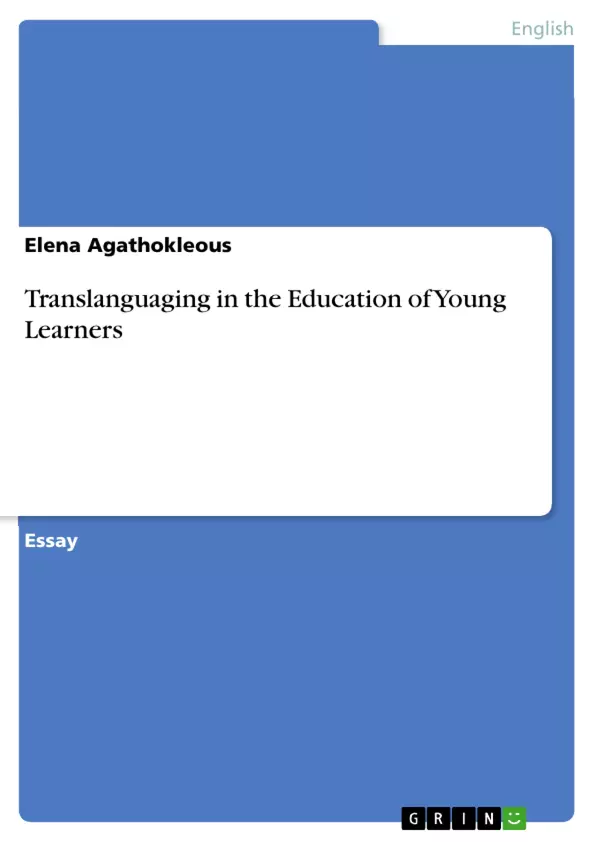The paper presents an overview of the origins of translanguaging as a concept and also provides definitions that arose so far from its study. It also presents the benefits of translanguaging in education and provides a description of practices and strategies used by both teachers and learners towards a multilingual development in learning environments offering some insight on how translanguaging is used and which goals it aids fulfill.
Translanguaging is an approach that came up due to the bilingual tendencies in education following the trends of multinational and multicultural societies of today.
Inhaltsverzeichnis (Table of Contents)
- Definition and Historical Backdrop
- Importance of translanguaging in education...
- Translanguaging strategies for teachers
- Translanguaging strategies of young learners..
- Personal perspective........
Zielsetzung und Themenschwerpunkte (Objectives and Key Themes)
This paper aims to provide a comprehensive overview of the concept of translanguaging, exploring its origins, definitions, benefits in education, and practical strategies employed by both teachers and learners. It delves into the history of bilingualism in education and highlights the shift towards a more multilingual approach.
- The historical development of translanguaging as a concept
- The benefits of translanguaging in promoting multilingual development
- The role of translanguaging in language teaching and learning
- Strategies for incorporating translanguaging in educational settings
- The impact of translanguaging on cognitive development and student engagement
Zusammenfassung der Kapitel (Chapter Summaries)
- Definition and Historical Backdrop: This chapter traces the origins of the term "translanguaging" from its Welsh roots to its contemporary application in education. It explores the shift from the view of bilingualism as a detriment to its recognition as a valuable asset in cognitive development and language acquisition. The chapter also discusses the emergence of translanguaging as a pedagogical approach promoting multilingualism.
- Importance of translanguaging in education: This chapter examines the role of translanguaging in creating more inclusive learning environments and promoting language development in diverse classrooms. It explores the debate surrounding translanguaging as an educational practice and its potential benefits for learners from various linguistic backgrounds.
Schlüsselwörter (Keywords)
Translanguaging, bilingualism, multilingual education, language acquisition, cognitive development, pedagogy, language teaching, learning strategies, classroom practice, inclusive education, cultural diversity.
- Citar trabajo
- Elena Agathokleous (Autor), 2020, Translanguaging in the Education of Young Learners, Múnich, GRIN Verlag, https://www.grin.com/document/1007722



